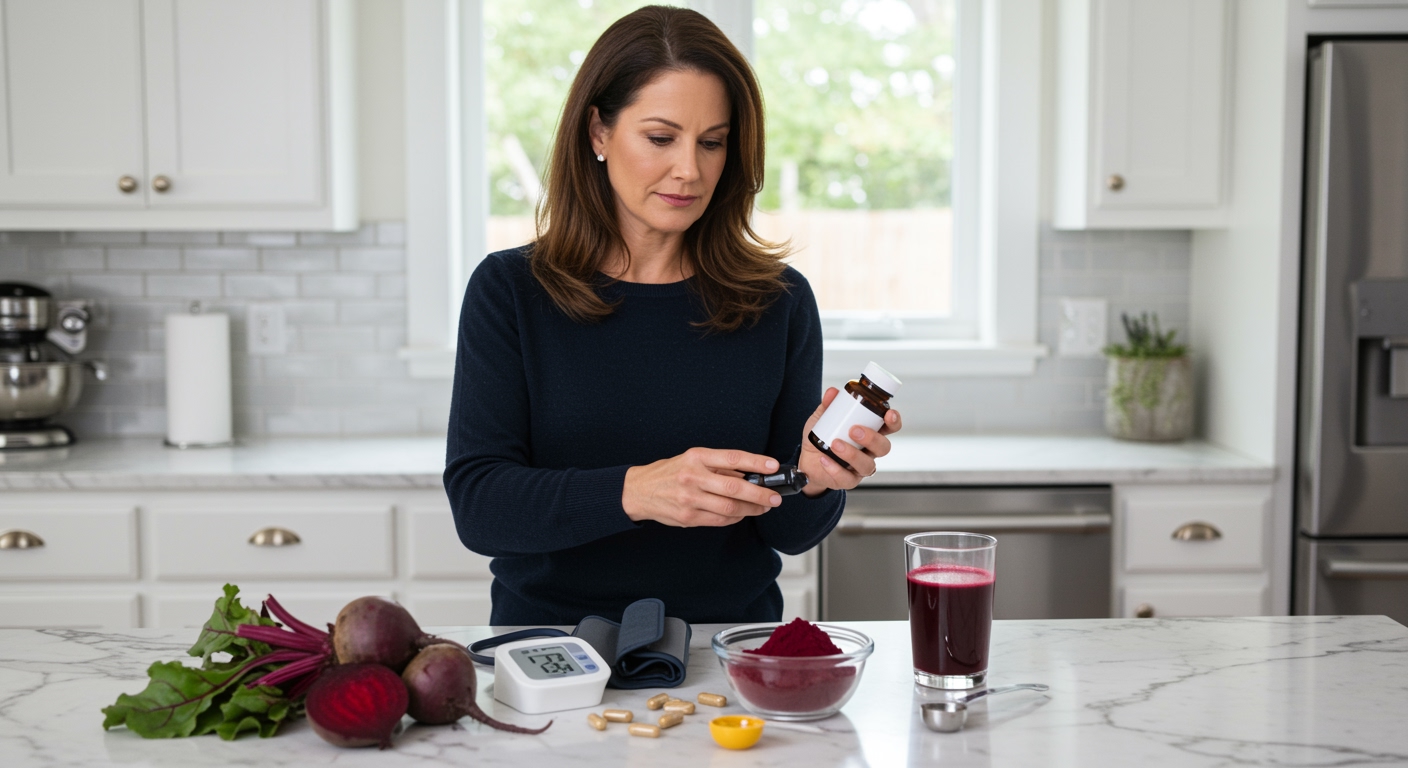✪ Key Takeaway: Garbanzo beans effectively lower blood pressure through potassium, fiber, and plant protein that support healthy circulation.
Introduction
Your doctor just told you to watch your blood pressure, and now you are staring at your pantry wondering what foods can actually help.
You might be asking this question because you want natural ways to support your heart health without relying solely on medications, or perhaps you have heard conflicting information about whether legumes like garbanzo beans are truly beneficial for blood pressure management.
Hi, I am Abdur, your nutrition coach, and today I am going to explain exactly how garbanzo beans can become your ally in managing blood pressure naturally and effectively.
How Do Garbanzo Beans Actually Lower Blood Pressure?
Garbanzo beans work through three main mechanisms to help reduce blood pressure in your body.
First, they contain high levels of potassium, with about 477 milligrams per cup of cooked beans. This mineral helps your kidneys remove excess sodium from your blood, which directly reduces the pressure on your artery walls.
Second, the soluble fiber in garbanzo beans helps lower cholesterol levels and improves blood vessel function. When your blood vessels are more flexible and less clogged, your heart does not have to work as hard to pump blood.
Third, garbanzo beans provide plant-based protein that supports healthy weight management. Maintaining a healthy weight reduces strain on your cardiovascular system and naturally lowers blood pressure.
Research shows that people who eat legumes regularly have lower systolic blood pressure compared to those who rarely consume them. The combination of nutrients works synergistically to support your entire cardiovascular system.
Your body responds to these nutrients within hours of consumption, though the most significant benefits appear after several weeks of regular intake.
✪ Pro Tip: Soak dried garbanzo beans overnight and cook them yourself to control sodium content better than canned versions.
What Makes Garbanzo Beans Different From Other Legumes?
Garbanzo beans stand out among legumes due to their unique nutritional profile that specifically targets blood pressure regulation.
Unlike many other beans, garbanzo beans contain higher amounts of folate, which helps your body produce nitric oxide. Nitric oxide is a compound that relaxes blood vessel walls and improves circulation throughout your body.
They also provide significant magnesium content, with about 78 milligrams per cup. Magnesium works alongside potassium to regulate blood pressure by helping your blood vessels relax and contract properly.
The protein quality in garbanzo beans is superior to many other legumes because it contains all essential amino acids your body needs. This complete protein profile helps maintain healthy blood sugar levels, which indirectly supports blood pressure control.
Garbanzo beans have a lower glycemic index than many other carbohydrate sources, meaning they cause a slower, more controlled rise in blood sugar. This steady energy release prevents the blood pressure spikes that can occur with high-glycemic foods.
Studies comparing different legumes show that garbanzo beans consistently rank among the top choices for cardiovascular health benefits.
✪ Fact: Garbanzo beans contain more folate per serving than kidney beans, black beans, or pinto beans.
How Much Should You Eat For Blood Pressure Benefits?
The optimal amount of garbanzo beans for blood pressure benefits is half a cup to one cup of cooked beans, three to four times per week.
This serving size provides approximately 240 to 480 milligrams of potassium, which contributes significantly to the recommended daily intake of 3,500 to 4,700 milligrams for blood pressure management.
You should start with smaller portions if you are not used to eating legumes regularly. Begin with a quarter cup three times per week and gradually increase to avoid digestive discomfort.
The timing of consumption matters less than consistency. You can eat garbanzo beans at any meal, but spreading them throughout the week provides more stable blood pressure benefits than eating large amounts occasionally.
Research indicates that people who consume legumes at least four times per week show the most significant improvements in blood pressure readings compared to those who eat them less frequently.
Remember that garbanzo beans work best as part of an overall heart-healthy diet that includes plenty of vegetables, fruits, whole grains, and lean proteins.
✪ Note: Always rinse canned garbanzo beans thoroughly to remove up to 40% of added sodium before eating.
Are There Any Risks Or Side Effects To Consider?
Most people can safely eat garbanzo beans for blood pressure benefits, but there are some considerations to keep in mind.
The most common side effect is digestive discomfort, including gas and bloating, especially when you first start eating them regularly. This happens because garbanzo beans contain complex carbohydrates that your gut bacteria ferment.
People taking blood pressure medications should monitor their levels closely when adding garbanzo beans to their diet. The potassium content might enhance the effects of certain medications, potentially causing blood pressure to drop too low.
If you have kidney disease, you should consult your doctor before increasing garbanzo bean consumption. Damaged kidneys may not process the extra potassium effectively, leading to dangerous accumulation in your blood.
Some people have legume allergies or sensitivities that can cause symptoms ranging from mild digestive upset to severe allergic reactions. Start with small amounts to test your tolerance.
Canned garbanzo beans often contain high amounts of sodium, which can counteract their blood pressure benefits. Always choose low-sodium versions or cook dried beans yourself for maximum health benefits.
✪ Pro Tip: Add a piece of kombu seaweed when cooking dried garbanzo beans to reduce gas-producing compounds naturally.
The Bottom Line
Garbanzo beans are indeed beneficial for high blood pressure due to their potassium, fiber, magnesium, and protein content that work together to support healthy circulation and reduce strain on your cardiovascular system.
Small, consistent changes in your daily food choices create the biggest impact on your long-term health outcomes. The key is making garbanzo beans a regular part of your weekly meal rotation rather than expecting immediate results from occasional consumption.
I would love to hear about your experience with garbanzo beans or any questions you have about incorporating them into your blood pressure management plan, so please share your thoughts in the comments below.
References
At NutritionCrown, we use quality and credible sources to ensure our content is accurate and trustworthy. Below are the sources referenced in creating this article:
- PMC: Legume consumption and risk of cardiovascular disease
- Harvard Health: Love those legumes
- IC Family Medicine: Ten foods that help lower blood pressure
- MedicineNet: Why are chickpeas bad for you





